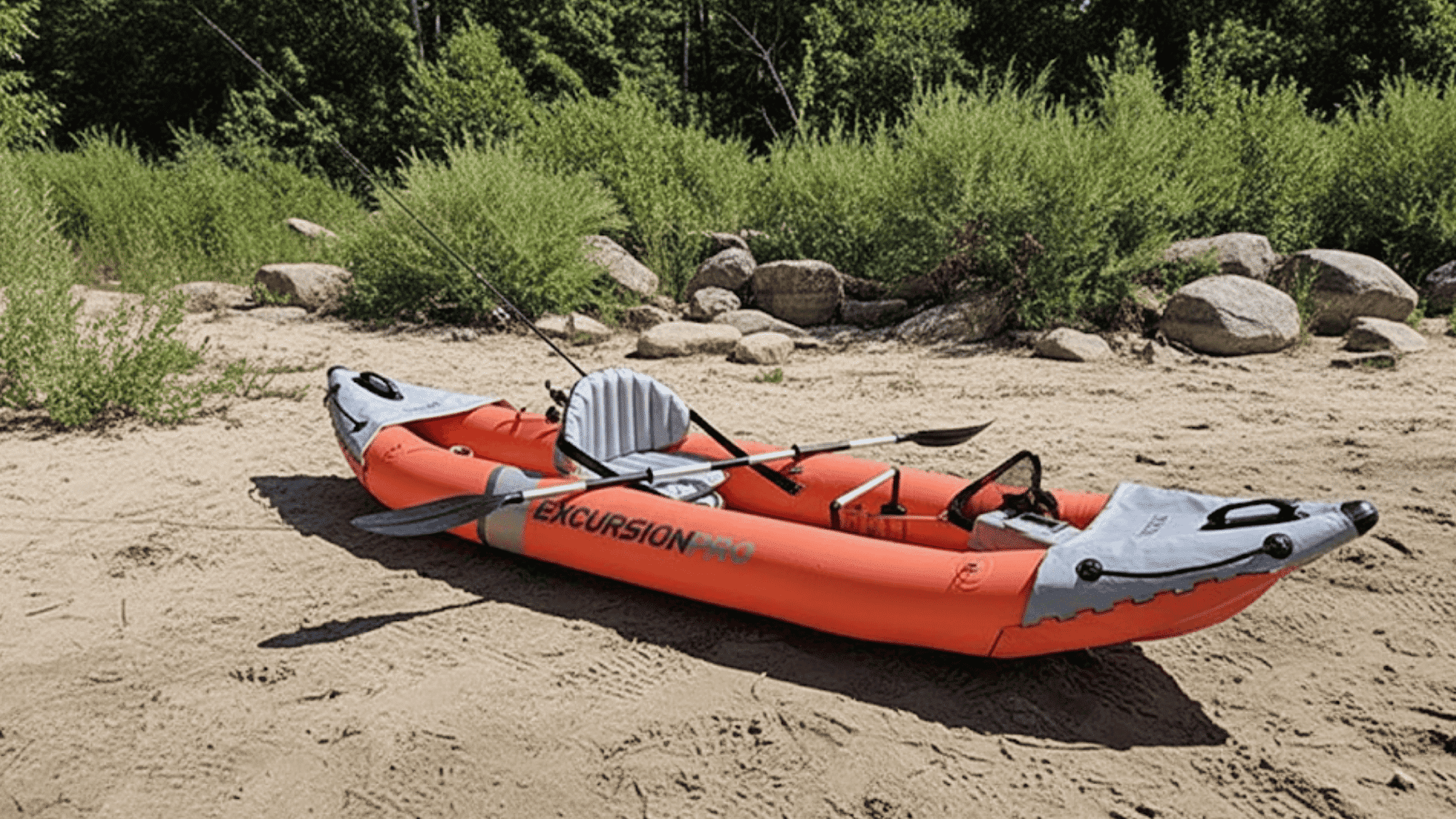When planning a day on the water with a friend or family member, selecting the right kayak is crucial.
Many people look at tandem models because they’re built for two paddlers, offering more space, stability, and the chance to share the experience together.
But before setting out, it’s natural to wonder how much weight these kayaks can safely handle. That’s where understanding the tandem kayak weight limit becomes important.
So, what is a tandem kayak? It’s essentially a longer and wider version of a single kayak, designed for two people to paddle side by side.
Some models even include an extra seat or space for gear, making them great for fishing, camping, or casual paddling. Knowing how they’re built and what they can carry helps you enjoy the water safely and confidently.
What is a Tandem Kayak?
A tandem kayak is a type of kayak designed to hold two paddlers instead of one. It’s longer and wider than a typical solo kayak, giving it more stability and extra space for people and gear.
Some models even have room for a third seat or the option to paddle solo by adjusting the seat position.
Tandem kayaks are popular with families, couples, or friends who want to share the paddling experience. They’re also a great choice for beginners because the added width and balance make them less likely to tip over.
With two people paddling, you can cover more distance with less effort, making tandems useful for day trips, fishing, or even multi-day kayaking.
Average Tandem Kayak Weight Limits

Most tandem kayaks are built to carry a higher load than single models, giving enough room for two paddlers and their essentials. On average, the weight limit for a tandem kayak falls between 500 and 600 pounds.
Some models designed for light recreation may be on the lower end, while heavy-duty or fishing tandems can exceed 650 pounds.
These numbers represent the total maximum capacity, which means the combined weight of both paddlers plus everything else that comes on board.
Every brand sets its own rating, so the exact limit can vary depending on the kayak’s make and model.
At this stage, it’s sufficient to understand the general range. The finer details about what affects these limits, as well as how to check your specific kayak’s rating, will be covered in later sections.
Performance Capacity vs Maximum Capacity
When manufacturers list a kayak’s weight limit, they usually mean the absolute maximum the kayak can hold before safety and handling are compromised. But paddling at that number isn’t ideal.
Most experts recommend staying around 70% of the maximum capacity for the best performance. This is often called the performance capacity.
| Capacity Type | What It Means | Effect on the Kayak |
|---|---|---|
| Maximum Capacity | The total load the kayak can hold before it risks sinking or losing stability. | Safe in calm water but unstable, sluggish, and harder to control. |
| Performance Capacity | About 70% of the maximum rating is considered the ideal load for comfort and handling. | Smooth paddling, better tracking, improved stability, and safer overall. |
By aiming for the performance capacity rather than pushing the maximum, you’ll keep your tandem kayak easier to paddle, more stable, and better balanced, making every trip safer and more enjoyable.
Why Staying Under the Limit Keeps You Safe
Before heading out, it helps to know why a kayak’s weight capacity is such a big deal. The number printed by the manufacturer isn’t just a guideline; it directly impacts your safety, comfort, and the overall life of your kayak.
Here’s why it matters:
- Stability on the Water: Exceeding the limit causes the kayak to ride lower, which reduces balance and increases the likelihood of tipping.
- Ease of Paddling: An overloaded kayak feels sluggish, harder to steer, and less responsive in currents or wind.
- Safety in Rough Conditions: With extra weight, your kayak becomes more vulnerable to waves or sudden shifts, raising the risk of capsizing.
- Long-Term Durability: Carrying too much weight stresses the hull or seams, which can shorten your kayak’s lifespan.
- Better Overall Performance: Staying under the limit ensures the kayak moves smoothly, tracks straighter, and handles as intended.
In short, respecting the weight limit ensures you stay safe, protect your kayak, and enjoy a smoother ride every time you paddle.
What Affects a Tandem Kayak’s Weight Capacity
Not all tandem kayaks are built the same, and that’s why their weight limits can vary so much. The design, size, and even the material play a big role in how much weight a kayak can safely carry.
Here’s a breakdown of the main factors that affect capacity:
| Factor | How It Affects Capacity |
|---|---|
| Hull Design | Wider or flatter hulls increase stability and support more weight, while narrow hulls prioritize speed but reduce capacity. |
| Material Used | Stronger materials, such as fiberglass or rotomolded plastic, can handle more load compared to lighter options. |
| Length and Width | Longer and wider kayaks displace more water, which boosts buoyancy and overall capacity. |
| Inflatable vs. Hardshell | Inflatable tandems float well but usually cap at lower limits, while hardshells often support higher weights. |
| Load Distribution | Evenly spreading paddler and gear weight prevents imbalance and keeps capacity closer to the rated limit. |
By understanding these factors, you can see why one tandem kayak may hold 425 pounds while another manages 650 pounds. Knowing what drives the difference helps you choose a kayak that truly fits your needs on the water.
Different Tandem Kayaks, Different Weight Limits
Not every tandem kayak is designed with the same capacity. Some are made for light recreational use, while others are built for heavy loads like fishing trips or multi-day travels.
Here’s how they can differ:
- Light Recreational Tandems – Compact, budget-friendly, and easy to transport. These usually handle 425–475 pounds, making them better for casual day trips.
- Standard Tandems – The most common type, built for two adults plus light gear. These often fall in the 500–600 pound range.
- Heavy-Duty Fishing Tandems – Wider and reinforced for stability, these kayaks can push 600–650 pounds or more, perfect for extra gear and bigger trips.
- Inflatable Tandems – Surprisingly buoyant and versatile, but most can handle around 500–600 pounds, depending on the brand.
As you can see, the label “tandem kayak” doesn’t mean one-size-fits-all. Choosing the right model depends on how much weight you plan to carry and what kind of paddling you’ll be doing.
How Tandem Kayaks Compare to Other Types

When picking a kayak, one of the most important details to check is its weight capacity. Different types of kayaks are built with different goals in mind. Some prioritize speed, while others focus on stability or gear storage.
To see how tandem kayaks measure up, here’s a quick comparison against other popular styles.
| Kayak Type | Average Weight Limit | Typical Use |
|---|---|---|
| Solo Recreational | 250–350 lbs | Short trips, beginners, light gear |
| Touring / Sea Kayak | 350–450 lbs | Longer paddles, ocean or lake touring |
| Fishing Kayak | 400–550 lbs | Extra stability for anglers and gear |
| Tandem Kayak | 500–600 lbs (some up to 650+) | Two paddlers, camping, family use |
Looking at the numbers side by side, it’s easy to see why tandem kayaks stand out.
They offer higher weight limits and extra space, making them perfect for partners, families, or gear-heavy trips.
While solo, touring, and fishing kayaks each serve their purpose, tandems remain the best choice for paddlers who need more capacity without sacrificing stability.
Safety Tips for Tandem Kayaks
Staying within your tandem kayak’s weight limit is the first step, but how you use that space also makes a big difference.
Always check the manufacturer’s specifications before heading out and include not just your own weight, but also your partner’s, plus all the gear you plan to carry. Even a cooler, life jackets, and fishing rods add up quickly.
Equally important is how you load the kayak. Distribute the weight evenly from front to back so the kayak sits balanced in the water.
An uneven load makes paddling harder and can increase the risk of tipping. If you’re paddling solo in a tandem, consider adding ballast or extra gear in the unused seat to keep the kayak stable.
By taking these precautions, you’ll not only stay safe but also enjoy better performance. A properly loaded tandem tracks straighter, glides more smoothly, and makes your time on the water far more enjoyable.
Conclusion
Tandem kayaks are designed to give paddlers more space, stability, and the chance to enjoy the water together. One of the most important details to keep in mind, however, is the weight limit.
If your kayak is rated for 500, 600, or even 650 pounds, staying within that range is key for safety, performance, and durability.
Overloading may not sink your kayak right away, but it can make paddling harder, reduce stability, and shorten the life of your boat.
Ready to choose your kayak? Start by checking the weight rating on models you’re considering and think about how you’ll use it, whether for family outings, fishing trips, or weekend camping.
Pick the right fit, stay within the limits, and enjoy your paddling trips with confidence.











